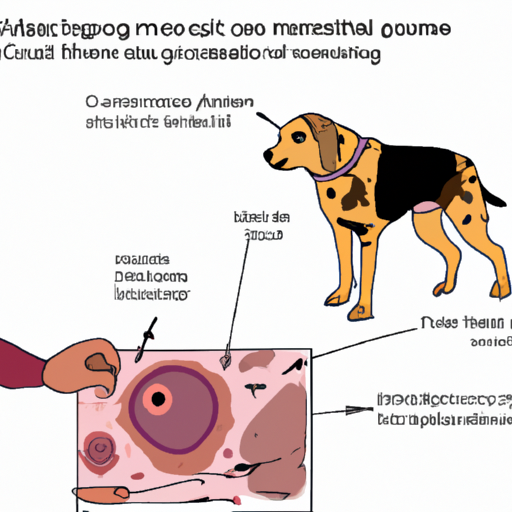Understanding Mast Cell Tumors
Mast cell tumors, or MCTs, are one of the most common types of skin cancer that affect dogs. They are a result of an abnormal proliferation of mast cells, a type of white blood cell involved in allergic reactions and immune response. They can occur anywhere in the body, but are most commonly found on the skin.
Your furry friend’s health is always a priority. When dealing with MCTs, you need to be well-informed so you can support your pet during this challenging time.
Recognizing the Symptoms
Mast cell tumors can manifest themselves in many different ways, which means you need to pay close attention to any changes in your dog’s behavior or appearance. Here are some common symptoms to look out for:
- Lumps or bumps on the skin: These can be small or large, soft or firm, and they may appear suddenly or grow slowly over time.
- Changes in existing lumps: If you notice a lump on your dog’s skin that changes in size or becomes ulcerated, it may be a mast cell tumor.
- Digestive issues: Some dogs may experience vomiting, diarrhea, or loss of appetite due to the effects of the tumor on the body’s systems.
Decoding the Diagnosis
Upon noticing any of these symptoms, it’s essential to reach out to your vet immediately. They will perform a series of tests to confirm the diagnosis. These may include:
- A fine needle aspirate to collect cells from the lump for analysis
- Blood tests to assess your dog’s overall health
- Imaging tests like X-rays or ultrasounds to determine if the tumor has spread
| Test Type | Purpose |
|---|---|
| Fine Needle Aspirate | Collects cells from the lump for analysis |
| Blood Tests | Assesses overall health |
| Imaging Tests | Determines if tumor has spread |
Exploring Treatment Options
The treatment for MCTs often involves surgery to remove the tumor. In some cases, chemotherapy or radiation therapy may also be recommended. The treatment plan will depend on the severity and location of the tumor, as well as your dog’s overall health.
Here are some potential treatment options:
- Surgery: This is often the first line of treatment, especially if the tumor is in a location that allows for complete removal.
- Chemotherapy: If surgery isn’t an option or if the cancer has spread, chemotherapy can be used to kill the cancer cells.
- Radiation Therapy: This may be used in conjunction with surgery or as a standalone treatment in certain cases.
Aftercare and Monitoring
Following treatment, regular check-ups will be necessary to monitor your dog’s recovery and ensure the cancer has not returned. It’s also important to maintain a healthy lifestyle for your dog, with a balanced diet and regular exercise.
Remember, you are the best advocate for your pet’s health. Stay proactive and don’t hesitate to ask your vet any questions.
FAQ
Q: Are certain breeds more susceptible to MCTs?
A: Yes, certain breeds such as Boxers, Bulldogs and Boston Terriers are more susceptible.
Q: Can MCTs be prevented?
A: There’s no surefire way to prevent MCTs, but maintaining a healthy lifestyle for your dog can help boost their overall immune system.
Q: How often should I check my dog for lumps or bumps?
A: It’s a good practice to check your dog monthly, and anytime you’re petting them, feel for any new or changing lumps or bumps.
Q: What is the prognosis for a dog with MCTs?
A: The prognosis can vary greatly depending on the location and severity of the tumor, but early detection and treatment can significantly improve the outcome.



